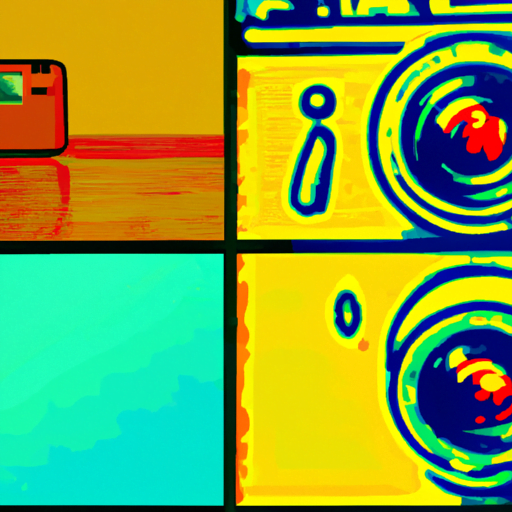
-
Table of Contents
The Intersection of Art and Technology in Digital Art

Art and technology have long been intertwined, with advancements in technology often influencing and shaping the world of art. In recent years, the rise of digital art has further blurred the boundaries between these two domains. Digital art encompasses a wide range of artistic practices that utilize technology as a medium or tool, allowing artists to explore new creative possibilities and engage with audiences in innovative ways. This article explores the intersection of art and technology in digital art, examining the impact of technology on artistic expression, the democratization of art through digital platforms, and the challenges and opportunities that arise in this rapidly evolving field.
The Impact of Technology on Artistic Expression
Technology has revolutionized the way artists create and express themselves. Digital tools and software have opened up new avenues for artistic experimentation, enabling artists to manipulate and transform images, sounds, and even physical spaces in ways that were previously unimaginable. For example, digital painting software allows artists to create intricate and detailed artworks with a level of precision and control that traditional mediums may not offer. Similarly, digital photography has democratized the medium, making it accessible to a wider audience and enabling photographers to manipulate and enhance their images with ease.
One of the most significant advancements in technology that has impacted artistic expression is virtual reality (VR) and augmented reality (AR). These immersive technologies have the potential to completely transform the way we experience and interact with art. Artists can create virtual environments or overlay digital elements onto the physical world, blurring the boundaries between the real and the virtual. This opens up new possibilities for storytelling, interactivity, and audience engagement.
Case Study: “The Enemy” by Karim Ben Khelifa
An example of the intersection of art and technology in digital art is “The Enemy,” a virtual reality project by photojournalist Karim Ben Khelifa. The project explores the psychology of soldiers in conflict zones by immersing viewers in a virtual environment where they can interact with soldiers from different sides of a conflict. Through this immersive experience, viewers gain a deeper understanding of the complexities of war and the human experience.
The Democratization of Art through Digital Platforms
Digital platforms have played a crucial role in democratizing art, making it more accessible to a wider audience. The internet has provided artists with a global platform to showcase their work, bypassing traditional gatekeepers such as galleries and museums. Artists can now reach a global audience with just a few clicks, allowing them to gain recognition and build a following without the need for traditional intermediaries.
Social media platforms, in particular, have become powerful tools for artists to share their work and connect with audiences. Platforms like Instagram and TikTok have become virtual galleries, where artists can showcase their art, engage with followers, and even sell their work directly. This has empowered artists to take control of their careers and reach a broader audience, regardless of their geographical location or background.
Case Study: Beeple’s “Everydays: The First 5000 Days”
An example of the democratization of art through digital platforms is the sale of Beeple’s digital artwork “Everydays: The First 5000 Days” as a non-fungible token (NFT) for a record-breaking $69 million. Beeple, a digital artist, had been creating and sharing a new artwork every day for over 13 years. Through social media platforms and online marketplaces, he built a dedicated following and eventually sold his digital artwork as an NFT, allowing collectors to own a unique piece of digital art. This sale not only highlighted the growing market for digital art but also challenged traditional notions of ownership and value in the art world.
Challenges and Opportunities in the Digital Art Landscape
While the intersection of art and technology in digital art presents exciting opportunities, it also poses unique challenges for artists and the art world as a whole. One of the main challenges is the issue of authenticity and originality in the digital realm. With the ease of copying and reproducing digital artworks, artists face the risk of their work being plagiarized or stolen. This raises questions about the value and ownership of digital art and the need for new models of authentication and provenance.
Another challenge is the rapid pace of technological advancements, which can make digital artworks quickly outdated or incompatible with new platforms and devices. Artists need to constantly adapt and stay up-to-date with the latest technologies to ensure their work remains relevant and accessible to audiences. Additionally, the reliance on technology introduces new vulnerabilities, such as the risk of data loss or technical glitches, which can impact the preservation and longevity of digital artworks.
Despite these challenges, the intersection of art and technology in digital art also presents exciting opportunities for artists to push the boundaries of creativity and engage with audiences in new and immersive ways. The use of interactive installations, virtual reality experiences, and augmented reality applications allows artists to create multisensory and participatory artworks that blur the line between the artist and the viewer. This immersive and interactive nature of digital art has the potential to foster deeper emotional connections and create transformative experiences for audiences.
Summary
The intersection of art and technology in digital art has revolutionized artistic expression, democratized the art world, and presented both challenges and opportunities for artists. Technology has enabled artists to explore new creative possibilities, from digital painting to virtual reality experiences. Digital platforms have democratized art, allowing artists to reach a global audience and challenge traditional gatekeepers. However, challenges such as authenticity and technological obsolescence persist. Despite these challenges, the immersive and interactive nature of digital art offers exciting opportunities for artists to engage with audiences in transformative ways. As technology continues to evolve, the intersection of art and technology in digital art will undoubtedly shape the future of artistic expression.
